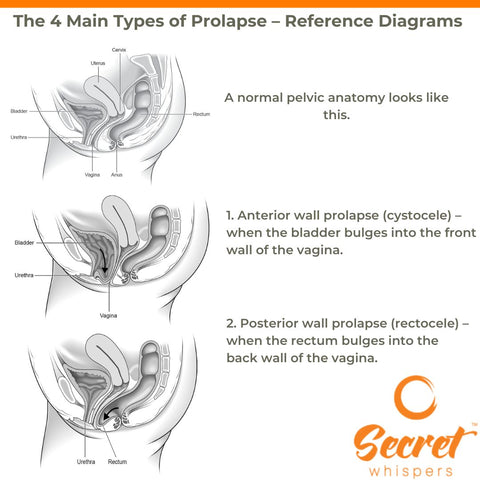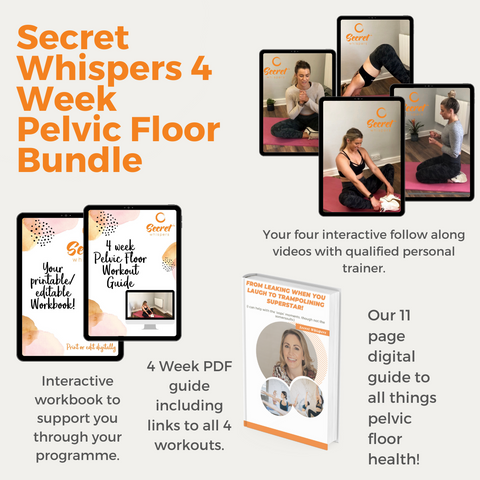What Does a Pelvic Organ Prolapse Feel Like?
Pelvic organ prolapse can be a distressing condition, often accompanied by a range of sensations and discomforts. While experiences may vary from person to person, there are some common indicators that can help identify this condition.
Typically, individuals with pelvic organ prolapse may experience feelings of pressure or fullness in the pelvic region. This sensation might be akin to something bulging or descending within the vagina.
Moreover, discomfort or pain during intercourse and urinary issues such as frequent urination or difficulty fully emptying the bladder or bowel can also be indicative of pelvic organ prolapse.
What Does a Pelvic Organ Prolapse Look Like?

In its early stages, a pelvic organ prolapse may not be visibly evident from the outside. However, as the condition progresses, there might be a visible bulge or protrusion in the vaginal area.
This bulge can vary in size and shape, depending on the type and severity of the prolapse. It's essential to pay attention to any changes in your body and seek medical advice if you notice any unusual protrusions or discomfort.
How to Check for a Pelvic Organ Prolapse
Wondering how to check for a pelvic organ prolapse yourself? Here's a simple guide to help you perform a self-assessment:
Using a hand held mirror to check for signs of a prolapse can also be a helpful method for individuals who want to visually assess their pelvic area.

It's crucial to emphasize the importance of regularly checking both your vulva and vagina, akin to the monthly self-examinations you perform on your breasts, to promptly identify any potential changes.
Here's how you can do it:
-
Preparation: Begin by finding a comfortable and well-lit area (where you won't be disturbed), where you can easily see your pelvic region. It's helpful to also have a full-length mirror positioned to provide a clear view.
- Positioning: Lie down or squat in a comfortable position with your legs bent and slightly apart. Place the handheld mirror between your legs, angled towards your vaginal area. Adjust the angle and position of the mirror until you have a clear view of your vulva and vaginal opening.
- Examination: Using the handheld mirror, carefully examine your vulva and vaginal area. Look for any signs of abnormality or protrusion, such as bulges or swelling. Pay close attention to the walls of the vagina and the opening of the urethra (where urine exits) for any noticeable changes in shape or position.
-
Insert a finger into the vagina: Gently insert one or two fingers into your vagina.
-
Examine: While inside the vagina, feel for any bulging or unusual sensation. Pay close attention to any protrusion or abnormality in the vaginal walls.
-
Movements: Perform movements such as coughing or bearing down (as if having a bowel movement). This might help identify any bulging or pressure that could indicate a prolapse.
-
Observation: Take note of any findings during the examination, including the presence of bulges, asymmetry, or other abnormalities.
-
Follow-up: If you observe any signs of a prolapse or have concerns about your pelvic health, make an appointment with your healthcare provider. They can perform a thorough evaluation, including a physical examination and, if necessary, additional tests or imaging studies to assess the extent of the prolapse and develop a personalized treatment plan.
If you notice any concerning signs or symptoms, such as a visible prolapse or persistent discomfort, it's essential to seek medical evaluation from a healthcare professional.
However, it's important to note that a self-check might not always accurately diagnose a pelvic organ prolapse.
If you suspect you might have a prolapse or if you're experiencing symptoms, it's highly recommended to seek evaluation and guidance from a healthcare professional. You can ask your doctor to refer you to a pelvic floor physiotherapist.
Are There Different Types of Pelvic Organ Prolapse?
Yes - there are in fact 4 different types of pelvic organ prolapse.
These include anterior prolapse, uterine prolapse, vault prolapse & posterior wall prolapse.
NOTE: It’s possible to have more than one of these at the same time.

-
Anterior Prolapse:
Also known as a cystocele, an anterior prolapse occurs when the wall of the bladder bulges into the front wall of the vagina. This can happen due to weakened pelvic floor muscles and connective tissues, often caused by childbirth, aging, or chronic straining.
Symptoms may include a feeling of pressure or fullness in the vagina, difficulty emptying the bladder completely, and urinary incontinence. -
Posterior Wall Prolapse:
Posterior wall prolapse, or rectocele, involves the bulging of the rectum into the back wall of the vagina. This condition often occurs due to weakened pelvic floor muscles and connective tissues, commonly associated with childbirth, chronic constipation, or heavy lifting.
Symptoms may include difficulty with bowel movements, a sensation of rectal pressure or discomfort, and difficulty fully emptying the bowel.
In some cases, a visible bulge or protrusion may be present during activities such as straining or bearing down.
-
Uterine Prolapse:
Uterine prolapse involves the descent or sagging of the uterus into the vaginal canal. It occurs when the supporting ligaments and tissues weaken, allowing the uterus to slip from its normal position.
Factors such as childbirth, menopause, obesity, and repeated heavy lifting can contribute to this condition. Symptoms of uterine prolapse may include a sensation of pelvic pressure or heaviness, discomfort during intercourse, urinary problems, and, in severe cases, the appearance of a bulge or protrusion from the vagina.
-
Vault Prolapse:
This happens when the vagina collapses inwards. Also known as vaginal vault prolapse or post-hysterectomy vault prolapse.
This condition occurs when the top of the vagina descends into the vaginal canal or outside the body following a hysterectomy (surgical removal of the uterus).
It happens due to the weakening of the supporting structures that once held the uterus in place. Symptoms may include pelvic pressure or discomfort, difficulty inserting tampons, urinary or bowel issues, and a noticeable bulge at the vaginal opening.
Each type of prolapse involves different pelvic organs and presents with its own set of symptoms and challenges.
Understanding the different types of pelvic organ prolapse is crucial for accurate diagnosis and effective management.
If you suspect you may have any form of pelvic organ prolapse, it's essential to seek medical evaluation and guidance for personalized treatment options.
For more information on urinary incontinence and pelvic health, explore our Multi Award Winning Pelvic Floor Strengthener.
Designed to strengthen your pelvic floor muscles from just 15 minutes a day. Improve stress and urge incontinence in 6 easy steps.
Just 15 minutes a day to a stronger pelvic floor.
EXPLORE MORE ARTICLES ON PELVIC HEALTH:
If you're seeking to enhance your pelvic floor strength within a month and master the proper techniques for Kegel exercises, we invite you to join our upcoming 30-Day Pelvic Floor Challenge.
This program aims to establish daily Kegel routines and get you into the daily habit of doing your Kegels every day with ease.
We start on Monday, April 8th, 2024. Don't miss this opportunity to prioritize your pelvic health and achieve lasting benefits.
Sign up now to be leak free for summer!
Want to learn how to boost your estrogen naturally through foods?
Only £4.99
- 27 Pages full of lots of great information.
- Recommended foods you can eat to help you naturally increase your estrogen and some fabulous recipes.
YOUR 4 WEEK PELVIC FLOOR MUSCLES WORKOUT PROGRAMME
Designed to be done anywhere and at any time. Yours to keep forever.
You can also join our fabulous womens only private Facebook Group
Never miss another blog again. Sign up now to our weekly Newsletter. You will get a 10% discount code to use too. Just click below ⬇️⬇️⬇️















